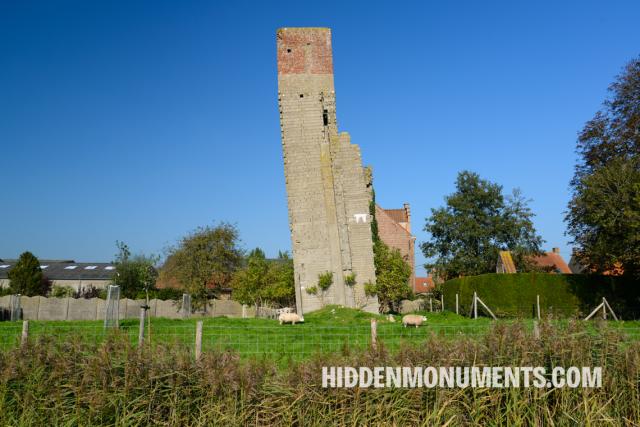In Antwerp, dozens of kilometres of trenches, parapets and ramparts lie hidden under a thick crust of branches and leaves.
Dark Tourism
Explore the intriguing world of dark tourism in Europe, where history's shadows come alive. Visit sites of battles, tragedies, and mysteries, each telling a unique story of the past. Uncover the allure of exploring Europe's darker side, from haunting ruins to historic battlegrounds.
- 150 destinations
The Zwin region between Belgium and the Netherlands has had an eventful military past as a natural border since the Hundred Years' War broke loose. Even during World War I, the border region came back into focus.
With a bunker as its foundation and on top of a floodbank, Air Guard Tower 5K3 offered a broad view over the Hollandsch Diep and the Mariapolder beyond.
You bump into this brick obelisk at the edge of a forest in northern France. The monument was erected more than two centuries ago.
World War I drove soldiers from all over the world to the battlefield in West Flanders. More than a hundred thousand Senegalese tirailleurs were also called up.
The Western Scheldt, the gateway to the port of Antwerp, played an essential role during World War II.
The Belgian army erected an observation post on the remains of the presbytery of St Catherine's Chapel in Pervijze during World War I.
Not much remains of Ramskapelle's former railway station today, as it was shot to pieces during the Battle of the Yser. The station was, therefore, right on the front line along the Yser.
The thousand inhabitants of the French village of Ornes, on the edge of a forest in the early 20th century, were awoken from their idyllic lives at the outbreak of the First World War.
Pagination
Latest from the blog
Do these monuments ring a bell with you? You might recognise the locations of films and series such as Doctor Who, Babylon Berlin, and Dark.
All photos and stories are copyrighted. Of course, linking to articles on the site is possible and allowed.
If you would like to use photos or articles from this website, please contact bart@hiddenmonuments.com.
© 2003-2024 Hiddenmonuments.com










